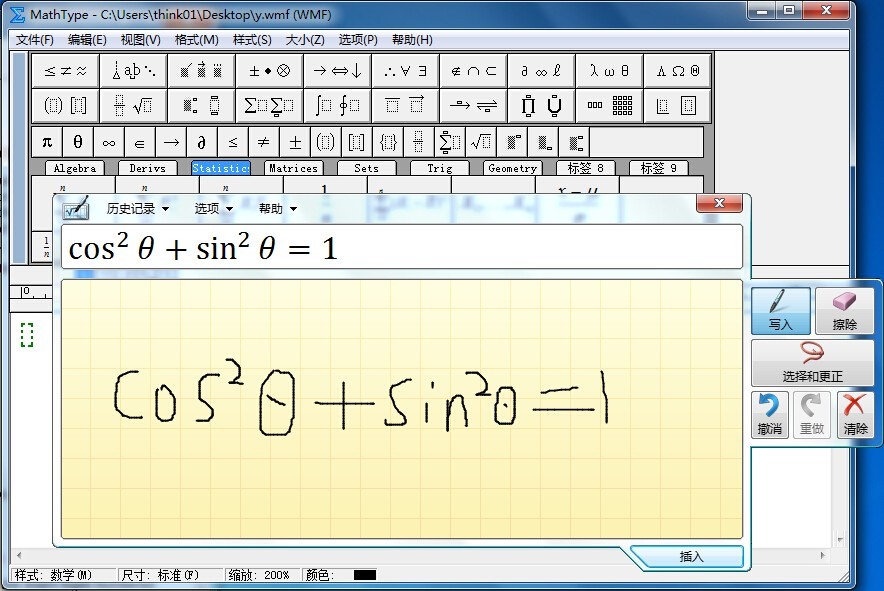Introduction
What is MathType?
MathType is a powerful equation editor software that allows you to create and insert mathematical expressions, equations, and symbols into various applications, including Microsoft Word.
Why use MathType in Word?
Word’s built-in equation editor can be limited in its capabilities, making it challenging to create complex mathematical expressions. MathType offers a more robust and user-friendly interface, providing advanced features and tools for creating professional-looking equations and formulas.
Overview of the tutorial
This tutorial will guide you through the process of setting up MathType in Word, creating mathematical expressions, inserting equations into your Word documents, customizing MathType to suit your preferences, and sharing some tips and tricks along the way.
Setting Up MathType in Word
Installing MathType
System requirements
Before installing MathType, ensure that your computer meets the minimum system requirements specified by the software vendor. Generally, MathType is compatible with most modern Windows and macOS operating systems.
Download and installation steps
- Visit the official MathType website (https://www.dessci.com/en/products/mathtype/) and navigate to the download section.
- Select the appropriate version of MathType for your operating system and follow the on-screen instructions to download the installer.
- Once the download is complete, run the installer and follow the prompts to complete the installation process.
Enabling MathType in Word
Accessing the MathType toolbar
After installing MathType, you’ll need to enable it in Word to access its features. Here’s how:
- OpenMicrosoft Word.
- Go to the “Insert” tab in the ribbon.
- Click on the “Equation” button, and select “MathType” from the drop-down menu.
- The MathType toolbar should now appear in Word.
Customizing the toolbar
MathType allows you to customize the toolbar by adding or removing buttons and rearranging their order. To customize the toolbar:
- Right-click on the MathType toolbar and select “Customize Toolbar.”
- In the “Customize Toolbar” window, you can add or remove buttons by selecting or deselecting them from the “Available Tools” list.
- Use the up and down arrows to rearrange the order of the buttons.
- Click “OK” to apply your changes.
Creating Mathematical Expressions
Basic Operations
Entering numbers, operators, and symbols
To enter numbers, operators, and symbols in MathType, you can use the respective buttons on the toolbar or the corresponding keyboard shortcuts. For example, click the “Square Root” button or press the “Sqrt” shortcut key to insert a square root symbol.
Formatting expressions
MathType provides various formatting options to enhance the appearance of your mathematical expressions. You can change the font, size, style (e.g., bold, italic), and color of the text and symbols using the formatting toolbar or the corresponding keyboard shortcuts.
Using templates and shortcuts
MathType offers a wide range of templates and shortcuts to quickly insert common mathematical structures, such as fractions, integrals, and summations. You can access these templates and shortcuts through the “Templates” menu or by using the corresponding keyboard shortcuts.
Advanced Operations
Building fractions
To create a fraction in MathType, follow these steps:
- Click the “Fraction” button on the toolbar or press the corresponding shortcut key.
- Enter the numerator and denominator values.
- Adjust the fraction’s appearance (e.g., thickness of the fraction bar, spacing) using the formatting options.
Creating exponents and subscripts
To insert exponents and subscripts:
- Type the base value.
- Click the “Superscript” or “Subscript” button on the toolbar or use the corresponding shortcut keys.
- Enter the exponent or subscript value.
Inserting Greek letters and symbols
MathType provides a wide range of Greek letters and mathematical symbols that you can insert into your expressions. To insert a Greek letter or symbol:
- Click the “Symbol” button on the toolbar or use the corresponding shortcut key.
- In the “Symbol” window, select the desired symbol category (e.g., Greek letters, operators, arrows) from the left pane.
- Double-click on the symbol you want to insert, or click the “Insert” button.
Working with matrices and arrays
To create a matrix or array in MathType:
- Click the “Matrix” button on the toolbar or use the corresponding shortcut key.
- In the “Matrix” window, specify the number of rows and columns, and select the matrix style (e.g., parentheses, brackets, vertical bars).
- Enter the matrix elements by navigating between cells using the arrow keys or mouse.
- Adjust the matrix formatting (e.g., spacing, alignment) using the formatting options.
Equation Editing
Selecting and modifying parts of an equation
MathType provides various selection tools that allow you to select and modify specific parts of an equation. You can use the “Selection” tool to select individual elements, or the “Structure” tool to select entire subexpressions or structures.
Adjusting spacing and alignment
To adjust the spacing and alignment of your equations, MathType offers several options:
- Use the “Spacing” toolbar to increase or decrease the spacing between elements.
- Adjust the alignment of subscripts, superscripts, and fractions using the respective formatting options.
- Align multiple equations or expressions using the “Align” feature.
Using the MathType equation editor
The MathType equation editor is a powerful tool that allows you to create and edit complex mathematical expressions. To access the equation editor:
- Double-click on an existing equation in your Word document.
- The MathType equation editor window will open, displaying the equation in a WYSIWYG (What You See Is What You Get) environment.
- Use the various tools and features in the equation editor to modify the equation as needed.
- Click “OK” to apply the changes and update the equation in your Word document.
Inserting Equations into Word Documents
Inserting equations as objects
To insert an equation as an object in your Word document:
- Position the cursor where you want to insert the equation.
- Click the “Insert Equation” button on the MathType toolbar or use the corresponding shortcut key.
- The equation will be inserted as an object that can be resized, moved, or edited by double-clicking on it.
Inserting equations as text
Alternatively, you can insert equations as text in your Word document:
- Position the cursor where you want to insert the equation.
- Click the “Insert Equation as Text” button on the MathType toolbar or use the corresponding shortcut key.
- The equation will be inserted as editable text, which can be formatted like regular text in Word.
Positioning and aligning equations
MathType provides various options for positioning and aligning equations in your Word document:
- Use the “Align” feature to align multiple equations horizontally or vertically.
- Position equations using indentation, tabs, or custom spacing.
- Wrap text around equations by setting the text wrapping properties.
Cross-referencing equations
If you need to cross-reference equations in your Word document, you can use Word’s built-in cross-referencing feature:
- Position the cursor where you want to insert the cross-reference.
- Go to the “Insert” tab in the ribbon and click on “Cross-reference.”
- In the “Cross-reference” window, select the “Equation” reference type and choose the equation you want to reference.
- Click “Insert” to add the cross-reference to your document.
Customizing MathType
Changing default settings
MathType allows you to customize various default settings to suit your preferences:
- Go to the “Preferences” menu and select “MathType Preferences.”
- In the “Preferences” window, you can adjust settings related to fonts, sizing, spacing, and other visual aspects of your equations.
- Click “OK” to apply the changes.
Creating custom symbols and templates
If the built-in symbols and templates in MathType don’t meet your needs, you can create your own custom symbols and templates:
- Go to the “Symbols” menu and select “Create New Symbol.”
- In the “Create New Symbol” window, design your symbol using the provided tools.
- Save the symbol and add it to your MathType library for future use.
To create a custom template:
- Go to the “Templates” menu and select “Create New Template.”
- In the “Create New Template” window, build your template using existing symbols, expressions, and formatting options.
- Save the template and add it to your MathType library.
Importing and exporting equations
MathType allows you to import and export equations in various formats, making it easy to share and collaborate on mathematical content.
Importing equations
To import an equation into MathType:
- Go to the “File” menu and select “Import.”
- In the “Import” window, browse for the file containing the equation you want to import.
- Select the appropriate file format (e.g., MathType, LaTeX, MathML).
- Click “Open” to import the equation.
Exporting equations
To export an equation from MathType:
- Go to the “File” menu and select “Export.”
- In the “Export” window, choose the desired file format (e.g., MathType, LaTeX, MathML, graphics formats like PNG or SVG).
- Specify the export settings (e.g., resolution, image size) if applicable.
- Click “Save” to export the equation.
Tips and Tricks
Keyboard shortcuts
MathType provides numerous keyboard shortcuts to streamline your workflow and increase productivity. Here are some commonly used shortcuts:
- Ctrl+1: Insert a fraction
- Ctrl+2: Insert a square root
- Ctrl+3: Insert an integral
- Ctrl+4: Insert a summation
- Ctrl+5: Insert a product
- Ctrl+Spacebar: Insert a multiplication dot
You can find a complete list of keyboard shortcuts in the MathType documentation or by accessing the “Keyboard Shortcuts” menu within the application.
Troubleshooting common issues
If you encounter any issues while using MathType in Word, here are some troubleshooting steps you can try:
- Check for updates: Ensure that you have the latest version of MathType installed, as updates often include bug fixes and improvements.
- Clear the MathType cache: Sometimes, cached data can cause conflicts. Go to the “Utilities” menu in MathType and select “Clear MathType Cache” to clear the cache.
- Restart Word and MathType: If the issue persists, try restarting both Word and MathType.
- Consult the MathType documentation or support resources: The MathType documentation and support resources can provide valuable insights and solutions for specific issues.
Best practices for using MathType in Word
To make the most out of MathType and ensure a seamless experience when working with mathematical expressions in Word, consider the following best practices:
- Use styles and templates consistently: Develop a consistent style for your equations and use MathType’s templates to maintain uniformity throughout your document.
- Cross-reference equations: Use Word’s cross-referencing feature to easily reference equations within your document, making it easier to navigate and update references if needed.
- Separate complex equations: Break down complex equations into smaller, more manageable components, and use MathType’s alignment and spacing tools to ensure clarity and readability.
- Backup your work: Regularly save your Word document and consider creating backups of your MathType equations or templates to avoid losing your work in case of any unexpected issues.
Resources and Further Learning
Official MathType documentation
The official MathType documentation is a valuable resource that provides comprehensive information on all aspects of the software, including detailed tutorials, reference guides, and troubleshooting tips. You can access the documentation from the “Help” menu within MathType or online at the MathType website.
Online tutorials and communities
In addition to the official documentation, there are various online tutorials and communities dedicated to MathType and equation editing. These resources can offer additional insights, tips, and examples from experienced users.
Some popular online resources include:
- MathType forums and community
- Video tutorials on YouTube and other platforms
- Blogs and websites focused on mathematical typesetting and equation editing
Advanced MathType features
While this tutorial covered the essential features of MathType, the software offers many advanced capabilities for power users and professionals. Some advanced features include:
- Scripting and automation: Use MathType’s scripting capabilities to automate repetitive tasks and customize the software’s behavior.
- Collaboration and version control: Integrate MathType with version control systems like Git for efficient collaboration and change tracking.
- Publishing and conversion: Convert equations to various formats (e.g., HTML, LaTeX, MathML) for publishing on the web or in other digital formats.
- Integration with other software: Explore MathType’s integration with other applications, such as MATLAB, Mathematica, or LaTeX editors, to streamline your workflow.
Explore these advanced features if you need more powerful equation editing and management capabilities.
Conclusion
Recap of key points
In this comprehensive tutorial, we covered the essential aspects of using MathType in Word, including:
- Installing and setting up MathType in Word
- Creating mathematical expressions, from basic operations to advanced structures like matrices and arrays
- Inserting equations into Word documents as objects or text
- Customizing MathType’s settings, symbols, and templates
- Importing and exporting equations in various formats
- Tips and tricks for efficient equation editing and troubleshooting
- Resources for further learning and exploring advanced MathType features
Final thoughts and encouragement
Mastering MathType can greatly enhance your ability to create professional-looking mathematical content in Word documents. While there may be a learning curve initially, the time invested in understanding MathType’s features and capabilities will pay off in increased productivity and improved quality of your mathematical writing.
Don’t hesitate to explore the resources provided in this tutorial, experiment with different techniques, and continue practicing to refine your MathType skills. With dedication and practice, you’ll be able to seamlessly integrate mathematical expressions into your Word documents, elevating the clarity and presentation of your work.






